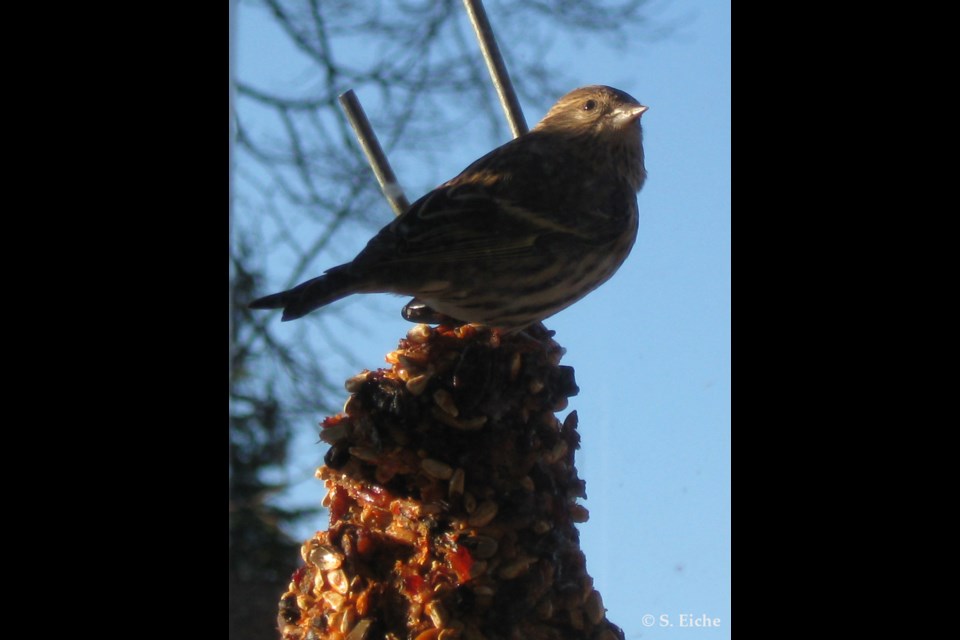For me there’s at least one enjoyable consequence of the return of restrictions during this Covid pandemic. No unnecessary outings means more time to monitor the birds frequenting my yard and study their routine.
Unlike us, birds don’t seek distractions. Day in, day out, they’re content to do the same things, go to the same places. Daylight is their clock. Although it’s still darkish these days at 7:15 a.m., they’re early risers, and the juncos, finches, chickadees – and now the recently arrived pine siskins – are already tucking into their suet and seeds by that time. The hummingbirds, too, arrive early, starting the day with a deep draught of nectar to bring their body temperatures back up to normal. My hummingbirds like to follow this with a few minutes of preening, after which they’re on the lookout for a companion to challenge them to a race around the yard.
I’ve placed several shallow receptacles filled with water on the ground and on the picnic table. The birds use the same ones for drinking and bathing. Mid-morning is a favourite time for bathing, when it’s not raining. Regardless of the species of bird, or its size, their ritual is similar – they hop in with an elegant dip, head first, followed immediately with lots of wiggle-waggling of the wings. Their energetic cleansing produces big waves.
At mid-day the songbirds vanish. I have no idea where they go, but I’ve observed that there’s no one at the feeders until about an hour later. Then suddenly everyone is back. Bushtits tend to come once in the morning and once in the afternoon. They’re always in a group of a dozen or more, and they fill the feeder to capacity as they peck at the suet cakes. Most birds bicker when another dares to intrude at the feeder, but the bushtits peck together in perfect harmony, as do pine siskins.
The late afternoon brings a feeding frenzy – the birds have to prepare for a long and cold night. Some of the more gregarious birds also like a pre-bedtime get-together. I’ve seen as many as ten or more finches perching at the top of my hawthorn – not singing, just cheeping. Communicating.
When the time comes to sleep, most songbirds will head for shrubs or trees with dense foliage, where they perch on a twig, if possible close to the trunk for better protection. They lay their head over their shoulder, nestling their beak in the feathers. Finally they pull one leg up to their body and keep it warm under the feathers. They’re able to sleep on one leg because their weight causes the heel tendon to tighten, which in turn tightens the foot’s grip on the branch.
Hummingbirds at night enter a state of torpor, a kind of controlled hypothermia. Their body temperature drops drastically and their metabolism slows, allowing them to conserve energy. They’ll sometimes hang upside down while asleep, but still firmly gripping their perch.
Come dawn, the daily routine begins all over again.
Sabine Eiche is a local writer and art historian with a PhD from Princeton University. She is passionately involved in preserving the environment and protecting nature. Her columns deal with a broad range of topics and often include the history (etymology) of words in order to shed extra light on the subject.



